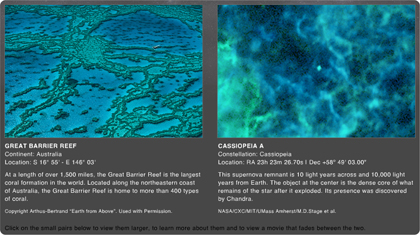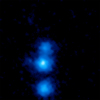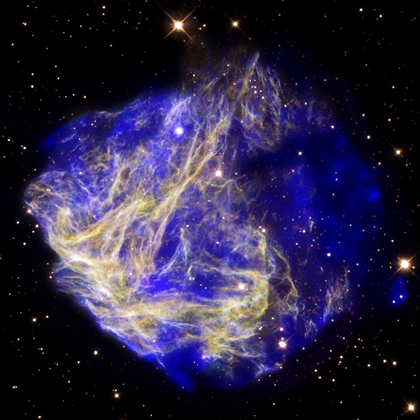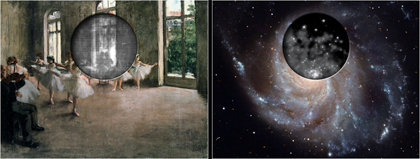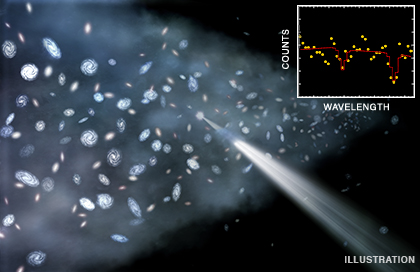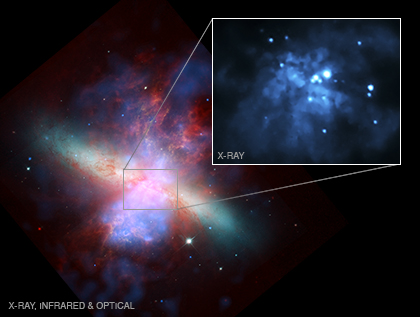Heaven and Earth
There are a lot of reasons why people like astronomy. For some, it's the topics it covers like black holes, exploded stars, and distant planets. For others, it's the sense of awe that the cosmos inspires. There are also lots of people that just think the images are beautiful and worth gazing at. And, for most, it’s some combination of these and others that make them want to learn more about astronomy.
Stellar Shrapnel Seen in Aftermath of Explosion
This beautiful composite image shows N49, the aftermath of a supernova explosion in the Large Magellanic Cloud. A new long observation from NASA's Chandra X-ray Observatory, shown in blue, reveals evidence for a bullet-shaped object being blown out of a debris field left over from an exploded star.
Innovative Exhibit Connects Art and Science Through X-ray Light
A new exhibition connecting art and science opens May 12th outdoors in the garden of the John Nicholas Brown Center at Brown University in Providence, RI. The exhibition features X-ray images of the cosmos from NASA’s orbiting Chandra X-ray Observatory, X-ray images of paintings from the Harvard Art Museum, as well as pieces by artist Roxanne Crocker of the Rhode Island School of Design. Entitled "Sight Lines: Looking Back, Seeing Through," the exhibition is free and open to the public during daylight hours from May 12 through May 31, 2010.
X-ray Discovery Points to Location of Missing Matter
Scientists have used NASA's Chandra X-ray Observatory and ESA's XMM-Newton to detect a vast reservoir of gas lying along a wall-shaped structure of galaxies about 400 million light years from Earth. In this artist's impression, a close-up view of the so-called Sculptor Wall is depicted. Spiral and elliptical galaxies are shown in the wall along with the newly detected intergalactic gas, part of the so-called Warm Hot Intergalactic Medium (WHIM), shown in blue. This discovery is the strongest evidence yet that the "missing matter" in the nearby Universe is located in an enormous web of hot, diffuse gas.
Chandra at Smithsonian Folklife Festival
For those of you who are still making 4th of July plans and might be in Washington, DC, for the holiday, here's something to consider. There will be a Chandra exhibit at this summer’s Smithsonian Folklife Festival from July 3-5. Why, you might ask? Well, one of the themes of this year’s festival is the "Unlocking the Mysteries of the Universe" -- and that's basically right up our alley. Throw in the fact that Chandra is operated and managed by the Smithsonian Astrophysical Observatory, and it's practically a match made in heaven.
Shapes All Over The Place: Bubbles
Maybe it's the large number of the pre-school people that we spend time with these days, but we see shapes all over the place. Hoping to go beyond the snack-and-nap crowd, we like to look for similar shapes in very unexpected places.
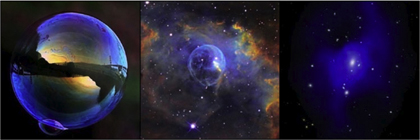
A demonstration of visuals for bubbles (soap bubble, bubble nebula, galaxy cluster bubbles) across different scales.
Webby Award To Chandra Trailer
Since the dawn of the Internet, there have been countless things that have come and gone. To some of them, we can easily say good riddance (flashing rainbow icons? the used-to-death phrase of the "information superhighway"?)


